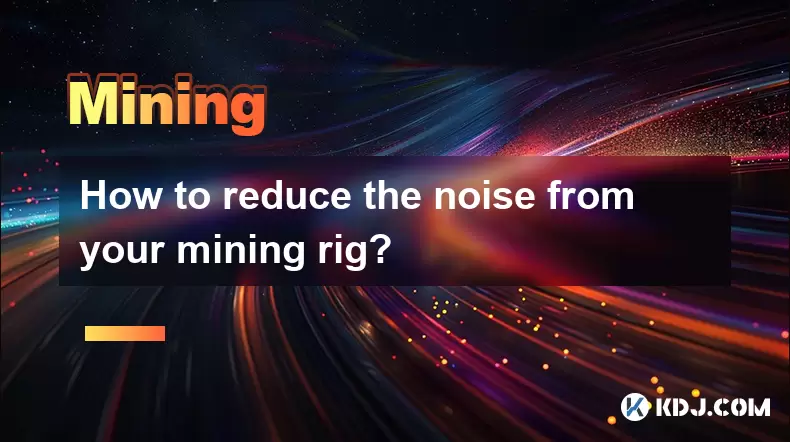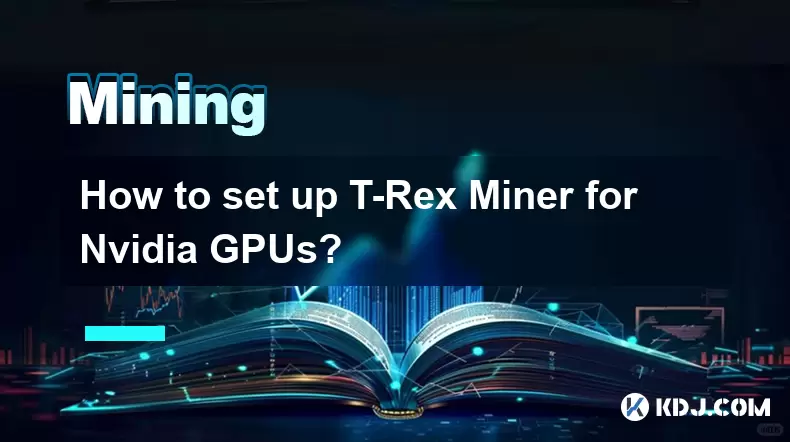-
 Bitcoin
Bitcoin $118300
1.01% -
 Ethereum
Ethereum $4215
0.69% -
 XRP
XRP $3.198
-3.83% -
 Tether USDt
Tether USDt $1.000
-0.01% -
 BNB
BNB $803.4
-0.53% -
 Solana
Solana $180.3
-0.67% -
 USDC
USDC $0.9998
-0.01% -
 Dogecoin
Dogecoin $0.2334
-1.49% -
 TRON
TRON $0.3394
0.86% -
 Cardano
Cardano $0.7980
-1.45% -
 Chainlink
Chainlink $22.19
6.65% -
 Hyperliquid
Hyperliquid $43.41
0.13% -
 Stellar
Stellar $0.4407
-3.13% -
 Sui
Sui $3.843
-2.24% -
 Bitcoin Cash
Bitcoin Cash $564.7
-3.74% -
 Hedera
Hedera $0.2588
-3.41% -
 Ethena USDe
Ethena USDe $1.001
0.00% -
 Avalanche
Avalanche $23.64
-3.37% -
 Litecoin
Litecoin $120.0
-4.01% -
 Toncoin
Toncoin $3.342
-1.11% -
 UNUS SED LEO
UNUS SED LEO $9.038
0.60% -
 Shiba Inu
Shiba Inu $0.00001347
-0.81% -
 Uniswap
Uniswap $10.69
-4.58% -
 Polkadot
Polkadot $4.034
-1.30% -
 Dai
Dai $1.000
0.01% -
 Bitget Token
Bitget Token $4.472
-1.52% -
 Cronos
Cronos $0.1571
-3.04% -
 Pepe
Pepe $0.00001207
-2.21% -
 Monero
Monero $273.8
-3.19% -
 Ethena
Ethena $0.7520
2.75%
How to reduce the noise from your mining rig?
Optimize fan curves, upgrade to quiet hardware, and improve airflow to reduce mining rig noise without compromising performance.
Aug 10, 2025 at 06:15 pm

Understanding the Sources of Noise in a Mining Rig
Noise in a mining rig primarily originates from the cooling components, particularly the fans and power supply units (PSUs). High-performance GPUs or ASICs generate substantial heat during continuous operation, necessitating aggressive cooling. The fan speed increases in response to rising temperatures, producing audible noise. Another contributor is coil whine, an audible high-pitched sound from electrical components under load. Additionally, vibrations from unsecured hardware can amplify noise by resonating with the rig’s frame or surrounding surfaces. Identifying the exact source is crucial to implementing effective noise reduction strategies.
Optimizing Fan Configuration and Speed Profiles
Adjusting fan curves is one of the most effective ways to reduce noise without sacrificing cooling performance. Most mining operating systems, such as HiveOS or RaveOS, allow granular control over fan speeds via web dashboards. Access the fan control settings and modify the curve to increase fan speed gradually with temperature. For example:
- Set fans to 40% at 50°C
- Ramp up to 70% at 70°C
- Reach 100% only at 80°C or above
This prevents fans from running at full speed unnecessarily. Use PWM (Pulse Width Modulation) fans for smoother control. Replace noisy stock fans with low-noise aftermarket models like Noctua or Arctic P12. Ensure all fans are mounted with rubber grommets to dampen vibrations. Clean fan blades and filters regularly to maintain airflow efficiency and reduce strain on motors.
Improving Airflow and Environmental Setup
Proper airflow reduces the need for high fan speeds. Position the mining rig in a well-ventilated area with at least 30 cm of clearance on all sides. Use intake and exhaust fans to create positive airflow—cool air enters from the front, hot air exits from the rear. Install the rig in a dedicated mining case or open-air frame designed for optimal airflow. Avoid placing the rig on carpet or enclosed spaces that restrict airflow. Consider adding ducting to channel hot air outside the room. Use temperature sensors to monitor hotspots and adjust fan curves accordingly.
Soundproofing the Mining Environment
When hardware modifications are insufficient, soundproofing the environment becomes necessary. Construct a soundproof enclosure using materials like mass-loaded vinyl (MLV) or acoustic foam panels. Line the interior of the enclosure with sound-absorbing insulation to minimize echo. Ensure the enclosure has ventilation ports with ducted exhaust fans to prevent overheating. Place the entire rig on a rubber mat or anti-vibration pads to isolate mechanical noise. For extreme cases, build a separate room or closet with insulated walls and airtight doors. Install inline duct fans with speed controllers to manage airflow silently.
Upgrading to Quieter Hardware Components
Replacing noisy components with quieter alternatives significantly reduces overall sound. Swap out loud PSUs with 80 Plus Platinum or Titanium certified units, which often feature semi-passive or fanless modes at low loads. Use ASIC miners with built-in noise reduction, such as the Antminer S19 XP Hyd or Innosilicon A11 Pro, which operate below 75 dB. For GPU mining, select triple-fan models with larger blades that move more air at lower RPMs. Consider switching to liquid-cooled mining solutions, like Immersion cooling tanks, which eliminate fan noise entirely. Replace mechanical hard drives with solid-state drives (SSDs) to remove another source of vibration.
Monitoring and Fine-Tuning Performance
Continuous monitoring ensures noise reduction efforts remain effective. Use HiveOS dashboard alerts to track temperature and fan speed deviations. Set up automated scripts that adjust fan curves based on ambient temperature. For example:
- Lower fan speeds during cooler nighttime hours
- Increase thresholds when ambient temperature drops
- Trigger alerts if any GPU exceeds 80°C
Use a decibel meter app or physical device to measure noise levels before and after each change. Log performance data weekly to identify trends. If noise increases over time, inspect for dust buildup, failing fans, or loose components. Regular maintenance prevents sudden spikes in noise due to hardware stress.
Frequently Asked Questions
Can undervolting reduce noise in a mining rig?
Yes, undervolting reduces power consumption and heat output, allowing fans to run slower. In MSI Afterburner or HiveOS, lower the GPU voltage while maintaining stable hash rates. This reduces thermal load, enabling quieter fan profiles without sacrificing efficiency.
Is it safe to enclose a mining rig in a soundproof box?
It is safe only if proper ventilation is maintained. Use ducted exhaust systems and temperature monitoring to prevent overheating. Include fire-resistant materials and automatic shutdown triggers if temperatures exceed safe limits. Never seal the rig airtight.
Do mining-specific BIOS settings affect noise levels?
Yes, flashing a mining-optimized BIOS can disable unnecessary features and improve power efficiency. Some BIOS versions allow fan curve customization at the firmware level, giving more precise control than software solutions. Always back up the original BIOS before flashing.
How often should I clean my mining rig to maintain low noise?
Clean the rig every 2 to 4 weeks depending on dust levels. Use compressed air to remove dust from fans, heatsinks, and PSU vents. Dust accumulation forces fans to work harder, increasing both noise and temperature. Include cleaning in your routine maintenance schedule.
Disclaimer:info@kdj.com
The information provided is not trading advice. kdj.com does not assume any responsibility for any investments made based on the information provided in this article. Cryptocurrencies are highly volatile and it is highly recommended that you invest with caution after thorough research!
If you believe that the content used on this website infringes your copyright, please contact us immediately (info@kdj.com) and we will delete it promptly.
- Altcoin Dominance, Bull Run, and Blockchain Forecasts: Is AVAX the Sleeper?
- 2025-08-10 22:30:14
- Pi Coin: Crypto Disappointment or Opportunity to Recoup Losses?
- 2025-08-10 22:30:14
- Crypto Presales: Unlocking Generational Wealth with the Best Coins in 2025
- 2025-08-10 22:50:14
- PEPE, Unilabs, and Fundraising: Crypto's Dynamic Duo?
- 2025-08-10 22:55:21
- Bitcoin, ETF Inflows, and Institutional Interest: A Bullish Trio?
- 2025-08-10 22:35:14
- Cold Wallet's Hot Streak: Acquisition, User Growth, and How it Stacks Up Against Ethereum & XRP
- 2025-08-10 20:30:16
Related knowledge

How to set up T-Rex Miner for Nvidia GPUs?
Aug 10,2025 at 12:07am
Understanding T-Rex Miner and Its Compatibility with Nvidia GPUsT-Rex Miner is a high-performance mining software designed specifically for Nvidia GPU...

What is "proof-of-work" and how does it relate to mining?
Aug 07,2025 at 02:03pm
Understanding the Concept of Proof-of-WorkProof-of-work (PoW) is a consensus mechanism used in blockchain networks to validate transactions and secure...

What are the differences between mining on Windows vs. Linux?
Aug 06,2025 at 11:29pm
Overview of Cryptocurrency Mining PlatformsCryptocurrency mining involves using computational power to solve complex cryptographic puzzles and validat...

How to use an old computer for cryptocurrency mining?
Aug 07,2025 at 12:42pm
Understanding the Feasibility of Using an Old Computer for MiningUsing an old computer for cryptocurrency mining may seem outdated, but it is still te...

What are the common mistakes beginners make in crypto mining?
Aug 10,2025 at 12:01am
Choosing the Wrong Hardware Without ResearchOne of the most frequent errors new miners commit is purchasing mining hardware without conducting thoroug...

Can you mine cryptocurrency using solar power?
Aug 07,2025 at 12:00am
Understanding the Basics of Cryptocurrency MiningCryptocurrency mining involves validating transactions on a blockchain network by solving complex cry...

How to set up T-Rex Miner for Nvidia GPUs?
Aug 10,2025 at 12:07am
Understanding T-Rex Miner and Its Compatibility with Nvidia GPUsT-Rex Miner is a high-performance mining software designed specifically for Nvidia GPU...

What is "proof-of-work" and how does it relate to mining?
Aug 07,2025 at 02:03pm
Understanding the Concept of Proof-of-WorkProof-of-work (PoW) is a consensus mechanism used in blockchain networks to validate transactions and secure...

What are the differences between mining on Windows vs. Linux?
Aug 06,2025 at 11:29pm
Overview of Cryptocurrency Mining PlatformsCryptocurrency mining involves using computational power to solve complex cryptographic puzzles and validat...

How to use an old computer for cryptocurrency mining?
Aug 07,2025 at 12:42pm
Understanding the Feasibility of Using an Old Computer for MiningUsing an old computer for cryptocurrency mining may seem outdated, but it is still te...

What are the common mistakes beginners make in crypto mining?
Aug 10,2025 at 12:01am
Choosing the Wrong Hardware Without ResearchOne of the most frequent errors new miners commit is purchasing mining hardware without conducting thoroug...

Can you mine cryptocurrency using solar power?
Aug 07,2025 at 12:00am
Understanding the Basics of Cryptocurrency MiningCryptocurrency mining involves validating transactions on a blockchain network by solving complex cry...
See all articles

























































































